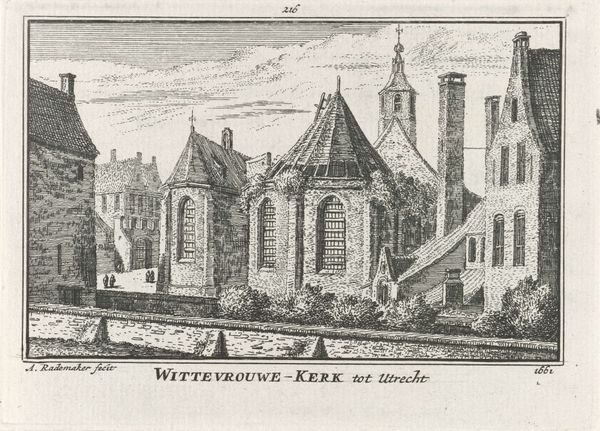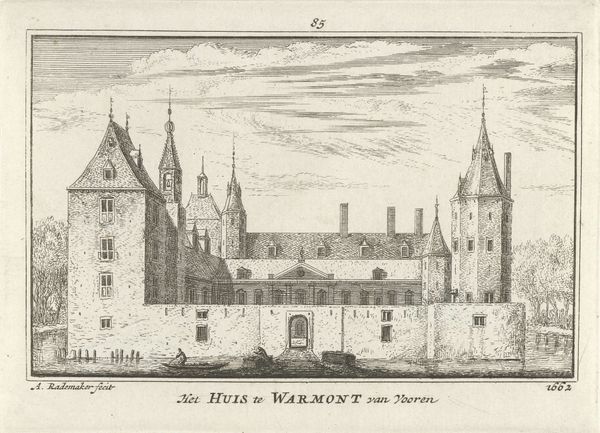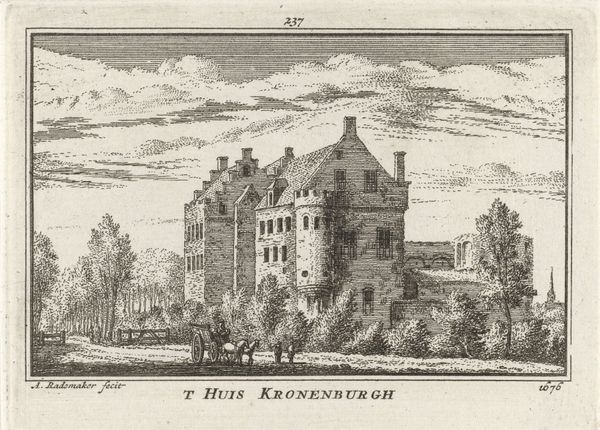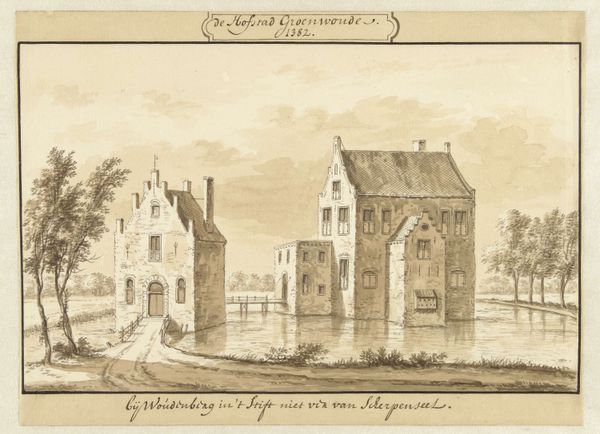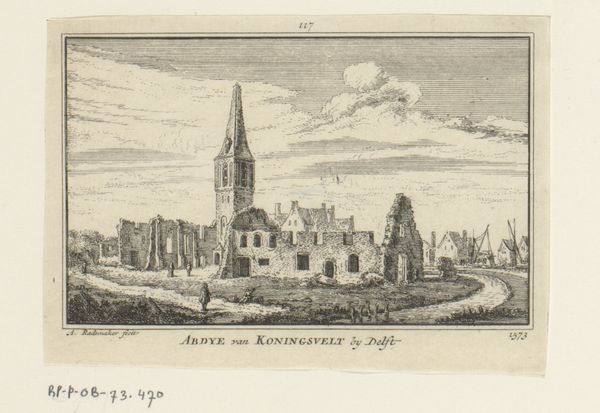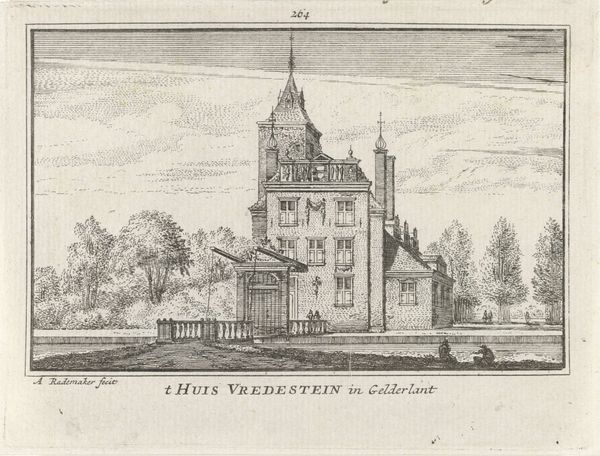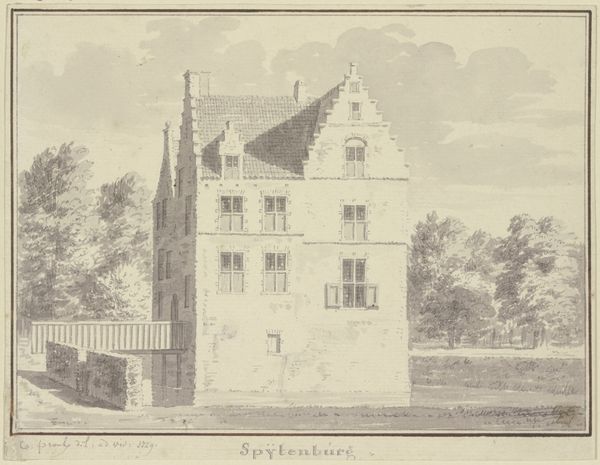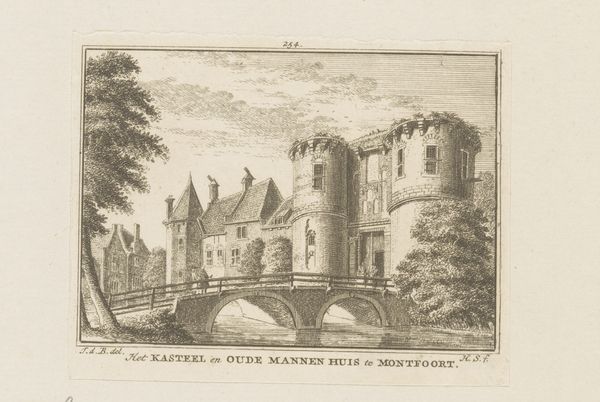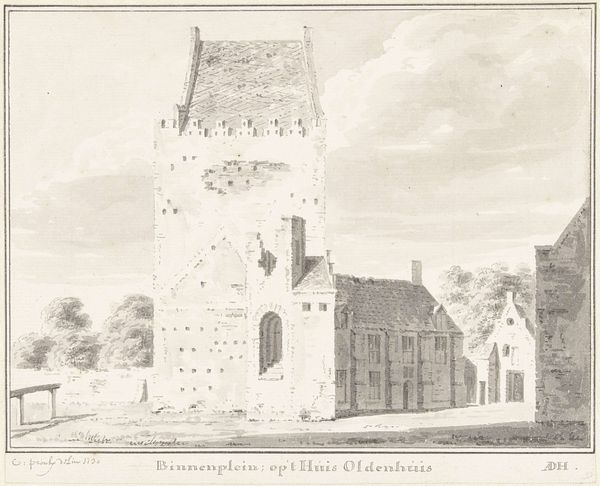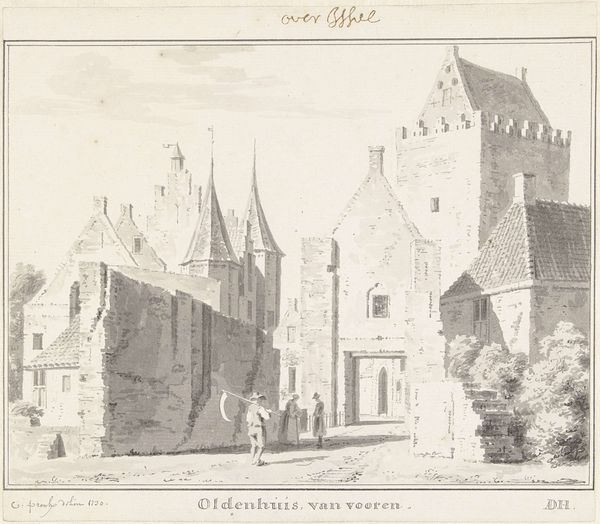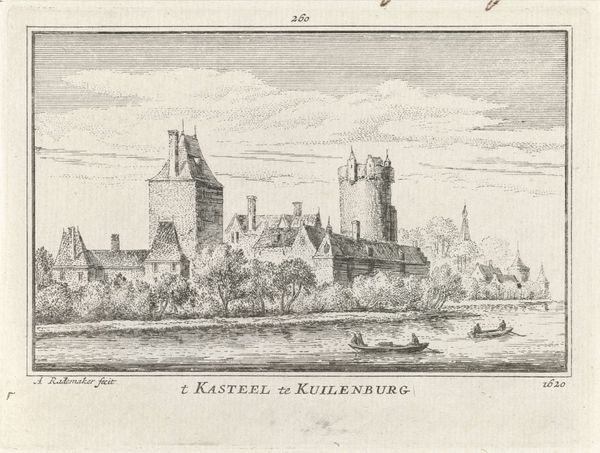
#
aged paper
#
quirky sketch
#
old engraving style
#
sketch book
#
personal sketchbook
#
sketchwork
#
pen-ink sketch
#
sketchbook drawing
#
storyboard and sketchbook work
#
sketchbook art
Dimensions: height 80 mm, width 115 mm
Copyright: Rijks Museum: Open Domain
Curator: Oh, look at this! It's Abraham Rademaker's "Ruïne van Kasteel Waardenburg," dating back to the early 18th century. Quite the evocative piece, wouldn't you agree? Editor: Immediately, I'm struck by this quiet, almost melancholic feeling. The aged paper adds so much to the mood... and that stark, almost desolate image of the castle evokes such a strong, haunted sensation, even though it’s just ink on paper. It's so interesting what line work can conjure, isn't it? Curator: Indeed. The fine lines Rademaker employed really bring out the detail of the ruin. Now, considering Waardenburg Castle, one has to understand its complex history. Situated in Gelderland, Netherlands, it represented much more than just stone and mortar, you know? Think of feudal power structures, ownership, control of trade routes along the Waal River... and how the inevitable decay mirrors the transition away from these hierarchical social orders. Editor: Absolutely, you can almost feel that sense of transition etched into those crumbling walls. But also, I love how seemingly unfinished it is –almost like something one would see scribbled in a personal sketchbook. There’s something immediate and intimate about it. Were these kinds of illustrations made for a broader audience? Curator: In fact, they were, to some extent. While this likely originated from Rademaker's sketchbook or served as preliminary work, engravings like these found their way into topographical publications, essentially the coffee-table books of the 18th century. Land ownership, historical records… this genre solidified cultural narratives around the Dutch landscape and its power dynamics. Editor: So, even something as ostensibly "simple" as this image has so much to say about how landscapes are not merely scenic backdrops, but really active sites where histories, power, and collective identities get constructed… all that through Rademaker’s ink and vision. It’s incredible. Curator: Absolutely. Rademaker captured both a physical place and an era in flux. And perhaps hinted at his own wistful vision. It speaks volumes about memory and legacy, really. Editor: Looking at this old ruin...it sort of whispers, you know? Both of destruction and artistic discovery. The perfect melancholic pairing.
Comments
No comments
Be the first to comment and join the conversation on the ultimate creative platform.

